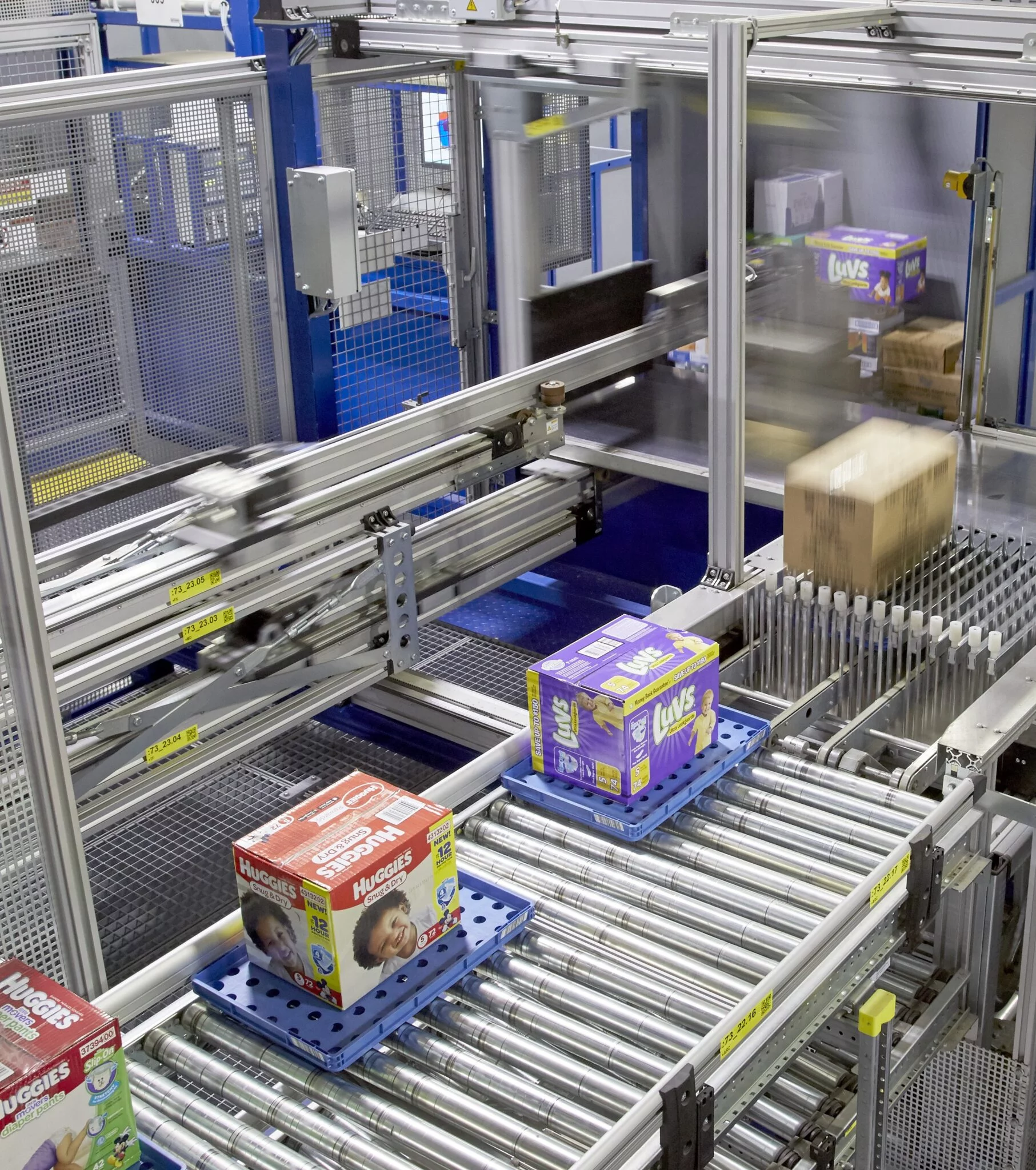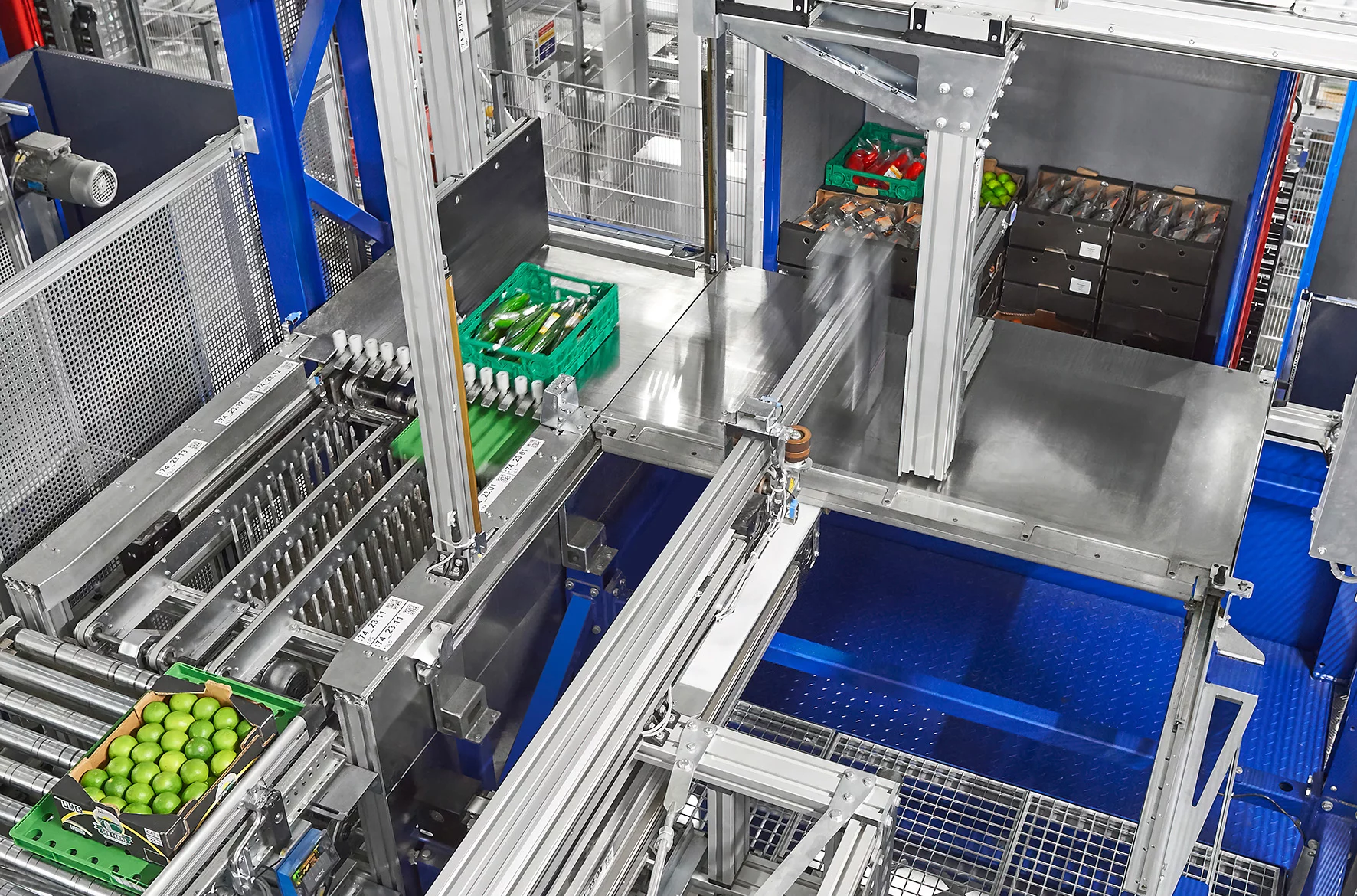One of the most advanced logistics centres in the German-speaking region is taking shape in Wiener Neudorf, Austria. REWE Group, one of Austria’s leading local suppliers, has awarded the WITRON Group the order to design, implement, and service a highly automated logistics centre for dry goods. The facility with a size of 135,600 square metres will handle more than 600,000 cases daily and supply around 2,500 stores from a product range of approximately 21,000 items. The core element of the project is the latest generation of WITRON’s OPM solution featuring 40 COM machines. The contract between the two project partners was signed in June 2025.
The REWE Group is transforming the site within existing premises into a sustainable and innovative logistics hub, incorporating state-of-the-art warehouse technologies. From there, the company will supply its BILLA, BILLA PLUS, BIPA, and ADEG stores, as well as cooperation partners such as gas station shops, with dry goods. “This project is a milestone for our entire company group. With the new logistics centre, we are creating the infrastructure needed for modern, efficient, and sustainable retailing”, explains Peter Maly, REWE Group Board Member for Logistics and Supply Chain Management.
“In Wiener Neudorf, we are building one of Europe’s most modern retail logistics platforms – a sustainable and resilient backbone for our supply chain,” emphasizes Marcel Haraszti, Executive Board Member of REWE International AG. “We are consolidating our goods flows, reducing transport volumes, increasing supply reliability, and creating new jobs for highly qualified employees in logistics, technology, and IT.”
Efficient module mix with high cost-efficiency
The facility will utilize WITRON’s OPM (Order Picking Machinery) and CPS (Car Picking System) solutions, enabling fully automated, semi-automated, and store-friendly stacking of cases onto pallets and roll containers. A unique feature of the CPS solution is that employees pick items in a path-optimized manner – guided by a pick-by-voice system – from a pick front stocked with layer trays, totes, and pallets. Replenishment is handled by stacker cranes.
Small-volume items will be picked directly from storage totes into shipping totes at eight ergonomically designed workstations using the DPS solution and guided by pick-by-light technology. Here too, the pick front is permanently and automatically replenished by stacker cranes. The individual logistics areas are connected via a conveyor system network. An intelligent consolidation strategy ensures optimal load carrier utilization for stores, resulting in significant transport cost savings.
In total, the entire material flow includes almost 550,000 storage locations for pallets, trays, and totes, more than 100 stacker cranes, and 18+ kilometers of conveyor system. All IT, control, and mechanical components are developed and manufactured in-house at WITRON’s headquarters in Parkstein.
“From the very beginning, our goal was to create a leading-edge logistics platform that combines efficiency, sustainability, and supply reliability. By consolidating logistics in Wiener Neudorf, we are also setting the highest standards in digitization and automation of retail logistics”, says Isabella Handler, Overall Project Manager at REWE International AG, emphasizing the importance of technological implementation.
Construction measures – high sustainability standards
The project is also designed with sustainability in mind. Built exclusively on previously developed land, the logistics centre will become the new core of REWE’s logistics operations in Austria and a flagship project for the company’s logistics strategy. Construction is set to begin in the second quarter of 2026, with operations scheduled to start in 2031. Where possible, the new WITRON technology will be integrated into existing buildings. Demolition work will begin in parallel to pave the way for new buildings – all without additional land.
“In Wiener Neudorf, we are building the infrastructure of tomorrow – fully integrated in our nationwide network in Austria. REWE Group’s key objectives are to strengthen supply reliability and reduce CO2 emissions along the entire supply chain”, explains Christian Hörner, Managing Director of Warehousing & Transport at REWE International AG. The logistics centre in Wiener Neudorf marks a major step toward achieving these goals and will serve as a model for REWE Group’s international retail logistics operations.”
A long-standing partnership
“We are proud to be implementing this project together with REWE – a clear sign that the chemistry between our two companies is just right”, says Markus Lang, Project Manager at WITRON. “REWE and WITRON have enjoyed a successful project partnership since 2012. Currently, WITRON is supporting REWE Germany as an implementation partner in a major re-organization initiative at the Neu-Isenburg site, where a semi-automated Case Picking System with aisle-bound picking vehicles is being replaced by the fully automated OPM system featuring 22 COM machines. The REWE site in Henstedt-Ulzburg has also been equipped with WITRON technology and is considered a benchmark in REWE’s German logistics network.”
similar news
Witron to Build Automated Logistics Centre for German Retailer REWE








